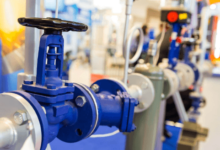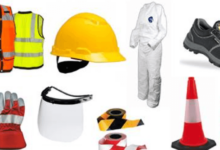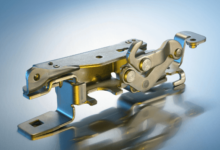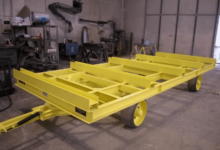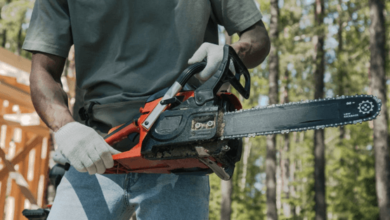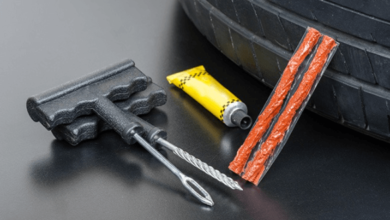Choosing the Right Magnetic Lifter: A Buyer’s Guide for Industrial Applications
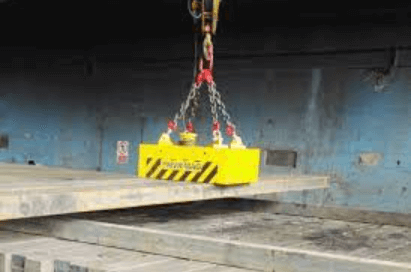
Magnetic lifters are a major time and cost saver on the ground for any project, moving materials with ease such as steel, iron, or nickel.
Magnetic lifters find applications in almost all industrial sectors, including:
- Manufacturing
- Construction
- Mining
- Recycling
- And Transportation.
If you’re looking for an advantage in this field, look no further than magnetic lifters. They come with better capacity and lifting methods for:
- Chains
- Slings
- And Hooks
Let’s take a look at what areas you can get the upper hand in:
Safety
Magnetic lifters ensure safe and stable load holding without causing any damage or deformation to the load surface. They also help to lower the dangers of mishaps and injuries related to manual handling, falling objects or sharp edges.
Efficiency
Transportation is made easy after lifting, and materials are moved easily. Thus improving your productivity, keeping your workflow in order, minimising downtime, and not forgetting labour costs.
Versatility
Magnetic lifters can lift almost everything: materials, shapes and sizes from small parts to large plates, flat surfaces to round or even cylindrical objects. They can also work in varied and tough environments like high temperatures, wet conditions, or restricted areas.
However, not all magnetic lifters are made equally and selecting the right one for your job greatly affects your lifting operation’s performance, quality, and safety.
The other part of this article will also cover the main factors that you should consider when buying a magnetic lifter, and we will consider the usual types of magnetic lifters and their applications.
Factors for Choosing a Magnetic Lifter
When choosing a magnetic lifter, there are several factors to consider, such as:
The magnetic properties, the thickness, and naturally height and weight are all considerations.
Factors to Keep in Mind While Selecting a Magnetic Lifter
When choosing a magnetic lifter, there are several factors to consider, such as:
- The Type and Weight of the Material to be Lifted – The magnetic lifter that the material is supposed to be lifted with varies with the magnetic properties, thickness and weight.
For instance, steel, iron, and nickel are very strong magnetic materials, and any magnetic lifter can lift them. In contrast, stainless steel, aluminium, and copper are weakly magnetic or non-magnetic materials and need unique magnetic lifters.
The thickness and weight of the material also influence the lifting capacity and performance of the magnetic lifter, as thicker and heavier materials need a stronger and bigger magnetic lifter.
- The Shape and Size of the Material to be Lifted – Materials of different shapes and dimensions dictate different magnetic lifters, which depend on the contact area, curvature, and orientation they require.
To illustrate, the standard magnetic lifter lifts flat and smooth materials, whereas round or cylindrical materials require other points or attachments of the magnetic lifters.
The position of the load also influences the lifting force and stability of the magnetic lifter, as horizontal or vertical lifting requires different magnetic lifters or changes need to be made.
- The Task and Site Specifications – Various tasks and sites demand magnetic lifters depending on the expected outcome and the site environment. For example, magnetic lifters should have a high, stable magnetic force in materials handling and moving. In contrast, in the case of materials sorting, maintaining magnetic lifters can vary, and controllable magnetic force is required.
The site conditions also influence the selection of the magnetic lifter: whether electricity is available and its cost, noise and emission regulations, site accessibility, and terrain.
The Magnetic Lifter’s Compatibility and Ease of Use
- The magnetic lifter should be amenable, where suitability is compatible with the lifting equipment and operator, considering the machine’s size, weight, power, coupler type, and control.
The coupler joins the lifting gear to the magnetic lifter, and it can be either mechanical or hydraulic depending on how often and how easily the magnetic lifter can be changed.
A control, however, is the element of the magnetic lifter that switches the magnetic field on and off, and it can be either automatic or manual, depending on the level of precision and the required flexibility of the lifting operation.
A perfect magnetic lifter should also be highly visible in all dimensions, including the performance, operation, and maintenance of the magnetic lifter, the availability and price of spare parts of the magnetic lifter, and the service provider of the magnetic lifter.
Main Kinds of Magnetic Lifters and Their Applications
There are many types of magnetic lifters available in the market, but some of the most common ones are:
- Permanent Magnetic Lifters – These permanent magnet lifters generate a strong and consistent magnetic force. They are very energy efficient as they do not need electrical power to retain their magnetic force.
In addition, they are extremely dependable since they do not lose their magnetic force with time or through exposure to external factors. Nevertheless, they are less versatile as they cannot change their magnetic power according to the material or task.
They are also most difficult to release because they need either a manual lever or a mechanical device to terminate the magnetic effect. Permanent magnetic lifters are suitable for lifting and moving strongly magnetic, thick, and heavy materials, such as steel plates, blocks, or bars.
- Electromagnetic Lifters – These electromagnetic lifters utilise electromagnets to develop a variable and force controllable magnetic. They are very flexible, as they can regulate and modify their magnetic pull based on the material or the requirement by altering the electric current.
They are also easy to release as they can eliminate the magnetic pull by turning off the electric current. Nevertheless, they are also less energy-effective because they need a continuous power supply to sustain the magnetic force. They are also less dependable, as they can demagnetise due to power outages or environmental factors.
A possible field of application for electromagnetic lifters is weakly magnetic or non-magnetic materials, such as thin and lightweight ones like stainless steel, aluminium, or copper. They are also suitable for sorting and separating materials, such as recycling or waste management.
- Hybrid Magnetic Lifters – These are hybrid magnetic lifters that use permanent magnets and electromagnets to produce uniform and ideal magnetic force. They combine the benefits of both permanent and electromagnetic lifters, including saving energy, reliability, flexibility, and ease of release.
They utilise permanent magnets to create a powerful and consistent magnetic force and electromagnets to increase or decrease the magnetic force if necessary. In addition, they use a small quantity of electric current to turn the magnetic force on and off, reducing power and increasing safety.
Hybrid magnetic lifters are good for lifting and moving materials with different magnetic properties, thickness, and weight, for instance, mixed metals, alloys, or composite materials. They are also suitable for performing different tasks, such as lifting, moving, sorting, or separating materials.
Read also: The Top 10 Must-Have Safety Gear Items for Every Construction Site
SUMMARY
To sum up, magnetic lifters are practical, multi-purpose devices that can lift and transport ferromagnetic materials safely and effectively. They have several advantages compared to traditional lifting techniques: safety, efficiency, and flexibility. Nevertheless, magnetic lifters are not equal and selecting the right one for your job can make a significant difference in the performance, quality as well as safety of your job.

